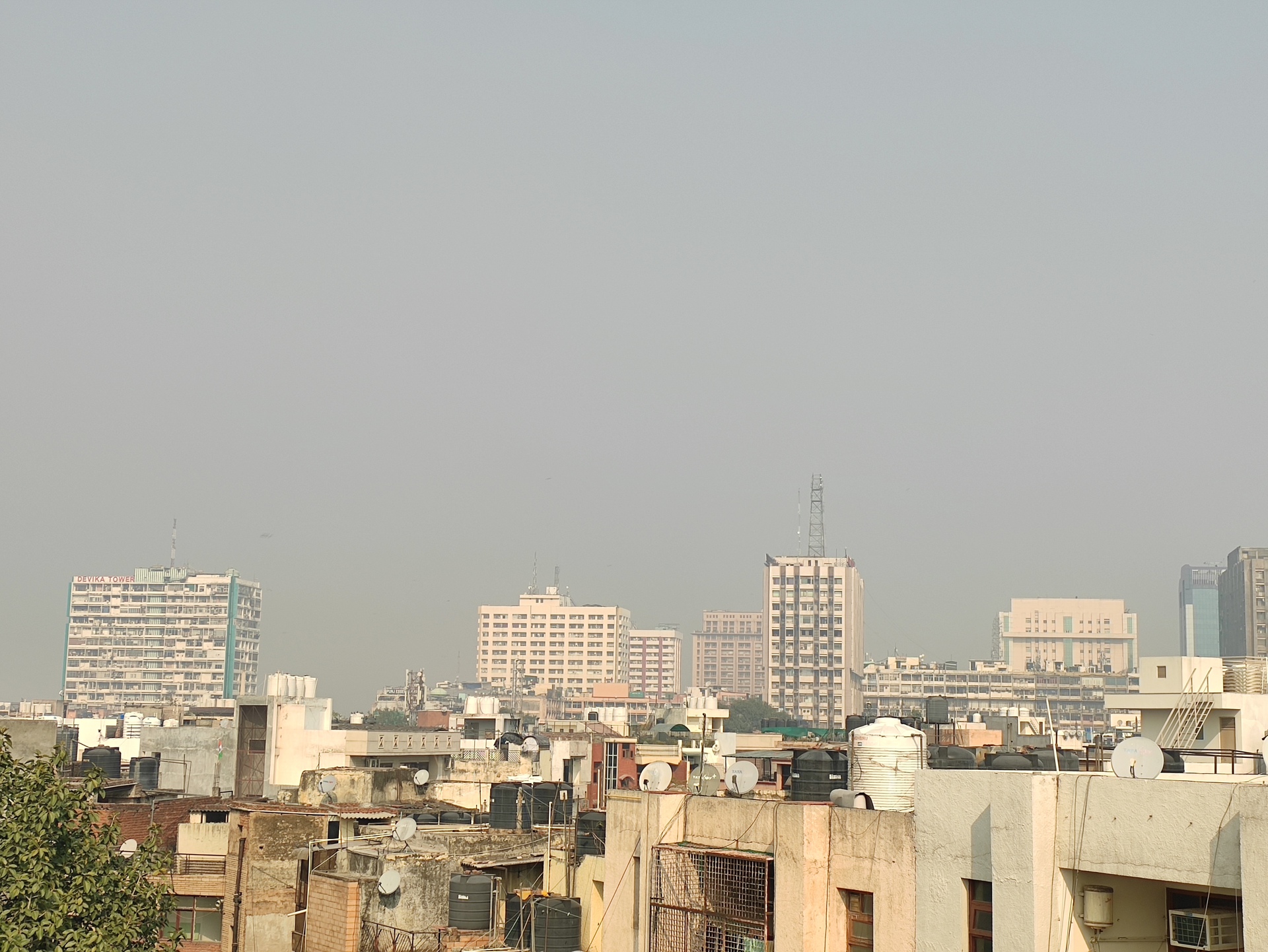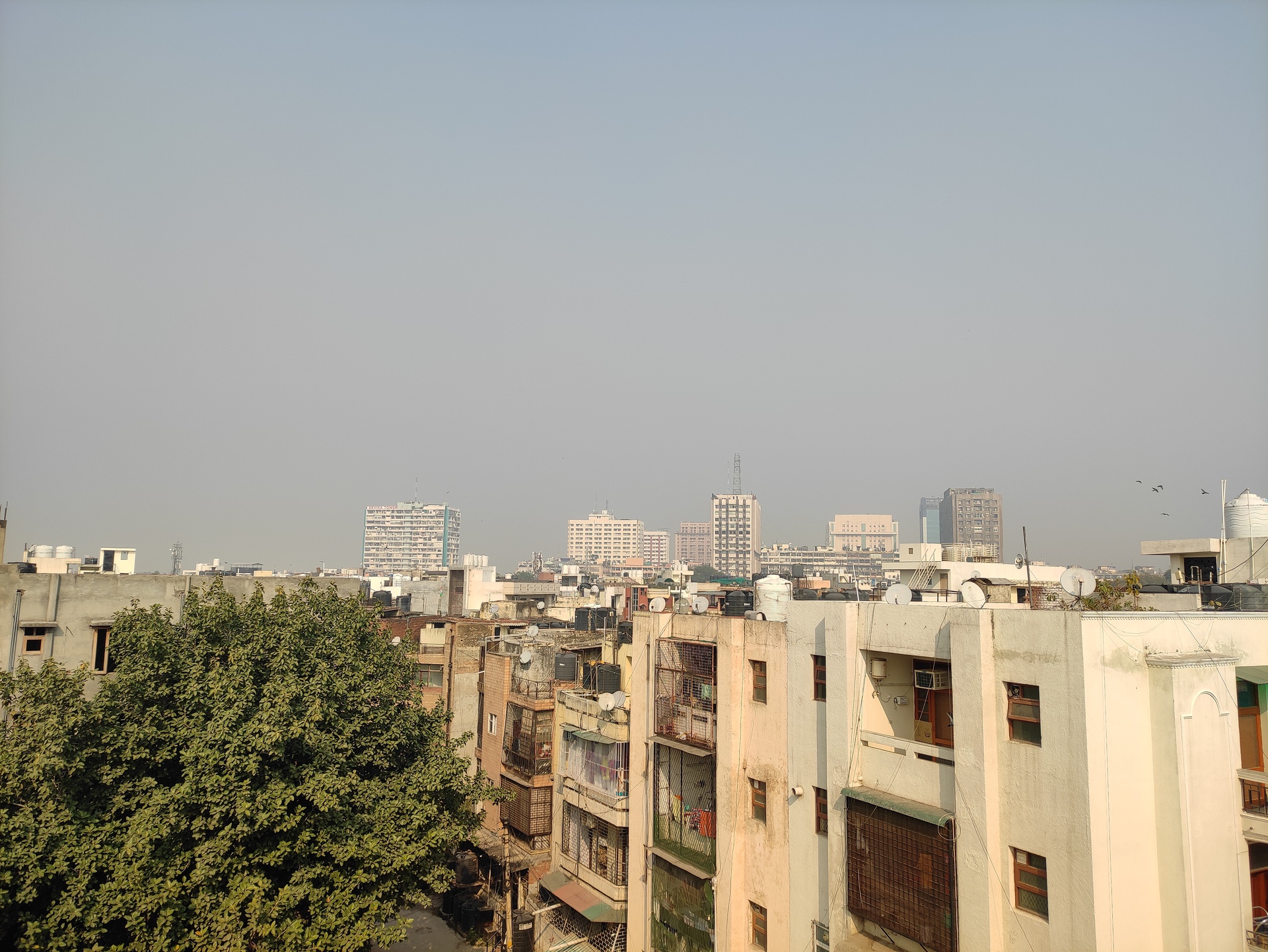To understand the importance of the Pocophone, you need to backtrack a bit. Launched in August 2018, the Poco F1 drastically changed the landscape of high-performance, value-priced smartphones. The promise was to deliver the best of specifications at a price point that would be appealing to all users. Starting off at under $300 in India, it certainly achieved it too.
However, the Poco X2 is a completely different beast. Introduced on the back of Poco being spun off into its own brand, the phone launches almost 15 months after the original F1. Many were questioning if there would ever be a successor. As it turns out, this is also not the Poco F1 successor that everyone was waiting for.
A near replica of the Redmi K30 launched late last year in China, the Poco X2 raises more questions than answers. I’ve been using it over the last few days to see what makes the phone tick. Here’s the Android Authority review of the Poco X2.
Design: You’ve seen this before
We’ll address the elephant in the closet. Yes, this phone looks exactly like the Redmi K30. In fact it was developed in collaboration with Xiaomi, which decided to launch the same hardware as the K30 in China. With that out of the way, the Poco X2 takes a massive leap forward over the F1. The original made it clear that compromises had been made to hit a certain price point; not so here. The Poco X2 is a thoroughly modern mid-range phone with all the trimmings that accompany it.

2019 saw Xiaomi stepping up its design game, and the X2 is a very clear reflection of that. The rear panel has a high-gloss finish in your color of choice. There’s a very subtle pattern to the design and up at the top is a design flourish that takes more than just a bit of inspiration from the Huawei Mate 30 Pro. The circular element around the camera is part of the same piece of Gorilla Glass 5. The finish doesn’t attract fingerprints and a quick wipe was usually enough to keep it clean.

The central mid-frame is made of plastic, with Gorilla Glass 5 on the front and the rear. The downside of using all that glass is that it makes the phone particularly slippery. Slipping on the included clear case gets around that issue though.
Other elements that stand out include the speaker grille at the bottom, a USB-C port for charging, as well as a headphone jack. The phone supports 27W fast charging, and the accompanying charger is included in the box. Over on the other side is a hybrid slot for dual SIM cards, as well as a microSD card should you want to expand storage.

The use of an LCD display necessitated the move to a more conventional fingerprint scanner. On the Poco X2, this is placed over on the right side of the phone. I really like it. I found my finger nestled perfectly on the fingerprint reader whenever I wanted to unlock the phone. While I’ve come to appreciate in-display fingerprint readers, those still aren’t as quick to unlock as a capacitive fingerprint reader and the one on the Poco is one of the fastest I’ve tried out.
The reliably quick side-mounted fingerprint scanner is a pleasure to use.
In other additions, the X2 gets a splash-proof nano-coating. Now, Poco isn’t claiming the X2 is water resistant, but your phone should be able to survive a few droplets in the rain or a spilled coffee.
Is the 120Hz display worth it?
Poco has made a big deal of the display on the X2, and for good reason too. The 6.67-inch IPS LCD screen has a refresh rate of 120Hz. Not only is that one of the highest amongst the current crop of smartphones, it is particularly intriguing to see it hit a decidedly mid-range price point.
I went in with a fair bit of skepticism towards the utility of a 120Hz panel, and honestly, after a few days of usage, I’m still not 100% convinced. While the screen is capable of a 120Hz refresh rate, it doesn’t necessarily mean that content is going to run at 120 frames per second all the time. This is true not just for games, but also for interface elements. The phone’s interface dynamically switches between 60 and 120FPS mode, and on occasion, this results in a bit of jank while scrolling.
When it works, it is refreshing to see incredibly smooth scrolling but I feel the software optimisation isn’t quite there yet to truly show off the hardware.

For day-to-day use, the screen is about as good as LCD displays go. It doesn’t have the deep dark blacks that are afforded by OLED panels and the colors certainly aren’t as punchy, but the calibration is fairly neutral and photographs and media look true to life. Add to that HDR10 capabilities, and you’ve got a capable media consumption device.
I found backlighting to be a bit uneven, and this is particularly noticeable in darker content. Overall brightness is sufficient to view the screen under the direct sunlight, but just about. I’d have liked a slightly brighter panel.

That uneven backlighting is also why Poco opted to darken the pill-shaped front-facing camera using software. Give it a close look, and you will see that there are two separate cut outs for the front-facing cameras. However, the uneven backlighting around the entire cut-out is unevenly diffused, which suggests that the company deliberately chose this approach for aesthetic reasons.
Over at the back, the Poco X2 has a mainstream quad-camera setup and a not-so-conventional dual-camera layout at the front. Options include a 64MP Sony IMX686 sensor as the primary camera, an 8MP ultrawide camera, as well as 2MP macro and depth cameras.
Honestly, I wish Xiaomi had opted for a telephoto lens over a much more niche macro use case. Moving on, up at the front, users have access to a 20MP camera paired with a 2MP depth sensor. The rear camera shoots 16MP pixel-binned results by default, but it is possible to switch over to a full resolution 64MP image should you chose.

I found results to be plenty good for the price, but the phone doesn’t set any new benchmarks in imaging prowess. Dynamic range continues to be fairly good, with shadow regions retaining a lot of detail. The natural-looking color processing is definitely a positive in my opinion, even though the color profile varies ever so slightly between the different modes.
 Poco X2 standard mode Poco X2 zoom
Poco X2 standard mode Poco X2 zoom

In bright sunlight, the images are perfectly fine, and in fact, look quite good with limited noise reduction and grain. However I’d refrain from using the 64MP mode in anything but perfect lighting since it adds a bit too much noise to the mix. The Poco X2 uses the primary camera to offer a 2x digitally zoomed crop.

I quite like the ultra-wide implementation here. The focus in on point across the field of view, and the company has done a good job at distortion correction.

Elsewhere, the macro camera is functional. I’m still not entirely convinced about dedicating an entire camera module to one of these since you should be able to crop in from the high resolution sensor for similar results. It works well in good lighting, but gets reduced to a smudgy blur once lighting falls.

The portrait mode makes use of the dedicated 2MP depth sensor. While the bokeh fall-off is reasonably good, I noticed that the phone struggles around hair and creates a very artificial looking cut-out pattern. This is par for the course with mid-rangers, but I expected better from Poco.

Similarly, selfies have a good amount of detail, but dynamic range suffers here with the phone opting to over-expose images. The portrait effect using the 2MP depth sensor is better than the usual software-based modes, though it’s still not quite perfect.

Video capture goes all the way up to 4K 30FPS. The Poco X2 captures crisp-looking footage that is detailed and has a slightly warm hue to it, however the lack of OIS is a bit of a bummer. The electronic video stabilisation is pretty good, but there is a discernible crop to the image frame. You can take a look at full resolution image samples here.
How is the Poco X2 performance?
This is where things get polarising. Part of the Poco F1’s appeal was that it packed a then-flagship Snapdragon 845 chipset. Paired with up to 8GB of RAM, it offered top-of-the-line performance at a fraction of the cost.
The Poco X2 is not that phone. In fact, it switches over to a 7-series Snapdragon 730G chip. It’s no slouch, but it isn’t quite a flagship killer either. The G moniker refers to the beefed up GPU here. The octa-core chipset mixes up two Cortex A76 cores clocked at 2.2GHz with six Cortex A55 cores clocked at 1.8GHz. The result is a chipset that should be able to optimise for battery life while scaling up nicely for performance when needed.
![]()
Meanwhile, the Adreno 618 GPU gets a 75MHz clock boost when compared to the stock Adreno 618 GPU on the Snapdragon 730. In real world usage, you can expect a slightly higher and smoother frame rate when playing games, which is important to maximise the 120Hz display on the X2.
Like practically every premium mid-range option on the market, general performance is really not an issue for the phone. It can run anything you throw at it and all games I tested out ran well with the graphics maxed out.
With most games capped at 60FPS, you won't see much use for that 120Hz display outside UI elements
On that note, I couldn’t find any game that would run anywhere near 120fps to be able to really take advantage of the 120Hz display. In fact, most games are capped at 60fps and you really won’t see the benefits of the high refresh rate panel at all. The issue lies with third-party developers and it isn’t really the fault of the company, but it does make you question the utility of the 120Hz display.
There are hints of jank in the interface too and it really makes you wish that Poco had spent a bit more time optimising the software.

Talking about software, the X2 runs MIUI 11 on top of Android 10. Predictably, the phone ships with Poco Launcher out of the box. However, I really didn’t appreciate the sheer amount of bloatware that was installed on the phone and offered up during the setup process. At least you won’t get interstitial ads while installing apps. ¯\_(ツ)_/¯
Pop in a large 4,500mAh battery, pair it with a frugal mid-range processor and you should get great battery life, right? That certainly holds true for the Poco X2. Locked to 120Hz, I was easily able to get a full day of use from the hardware. Drop it down to 60Hz and you should make the phone last a whole lot longer. When it is time to top off the phone, the included 27W is able to top-off the battery in a little over an hour.
Poco X2 specs
| Poco X2 | |
|---|---|
| Display | 6.67-inch LCD 2,340 x 1,080 resolution 20:9 aspect ratio 120Hz refresh rate Punch-hole display |
| SoC | Snapdragon 730G Octa-core Adreno 618 GPU 8nm |
| RAM | 6/8GB LPDDR4X |
| Storage | 64/128/256GB UFS 2.1 Expandable |
| Cameras | Rear: 64MP main camera (IMX686) with f/1.89 aperture 8MP ultra wide camera (120-degree field of view) with f/2.2 aperture 2MP macro camera (2cm to 10cm) with f/2.4 aperture 2MP depth camera with f/2.4 aperture Front: 20MP primary camera 2MP depth camera |
| Battery | 4,500mAh 27W fast charging Non-removable |
| Dimensions and weight | 165.3 x 76.6 x 8.79mm 208g |
| Colors | Atlantis Blue Phoenix Red Matrix Purple |
Is the Poco X2 a good buy?

Priced starting at Rs. 15,999, the Poco X2 misses the mark at truly differentiating itself in a crowded market. Sure, it’s not a bad phone by any stretch, but there’s nothing magical or groundbreaking about this device.
Honestly, it isn’t even that far off from the Redmi K20, that offers similar specs with an arguably better AMOLED display and a pop-up selfie camera.
Devices like the Realme X2 have also stepped up the game and if you can overlook the 120Hz display panel, there is a lot in common between Realme’s phones and the Poco X2.
The Poco X2 is a perfectly normal mid-range phone that lacks the magic of what made the brand stand out.
The return of the Pocophone has been a long time coming, and the anticipation among the fans is palpable. That said, I can’t help but think that a lot of those fans will be disappointed by what is presented here. The Poco X2 is a good phone that doesn’t really embody the ethos of what made the brand special. It is a perfect mid-ranger that doesn’t stray from the norm or break the mould in any meaningful way.
This concludes our Poco X2 review. What are your thoughts on the Poco X2? Do you think it stands out against Xiaomi and Realme’s phones or is it a largely forgettable piece of kit? Let us know in the comments below!

No comments:
Post a Comment